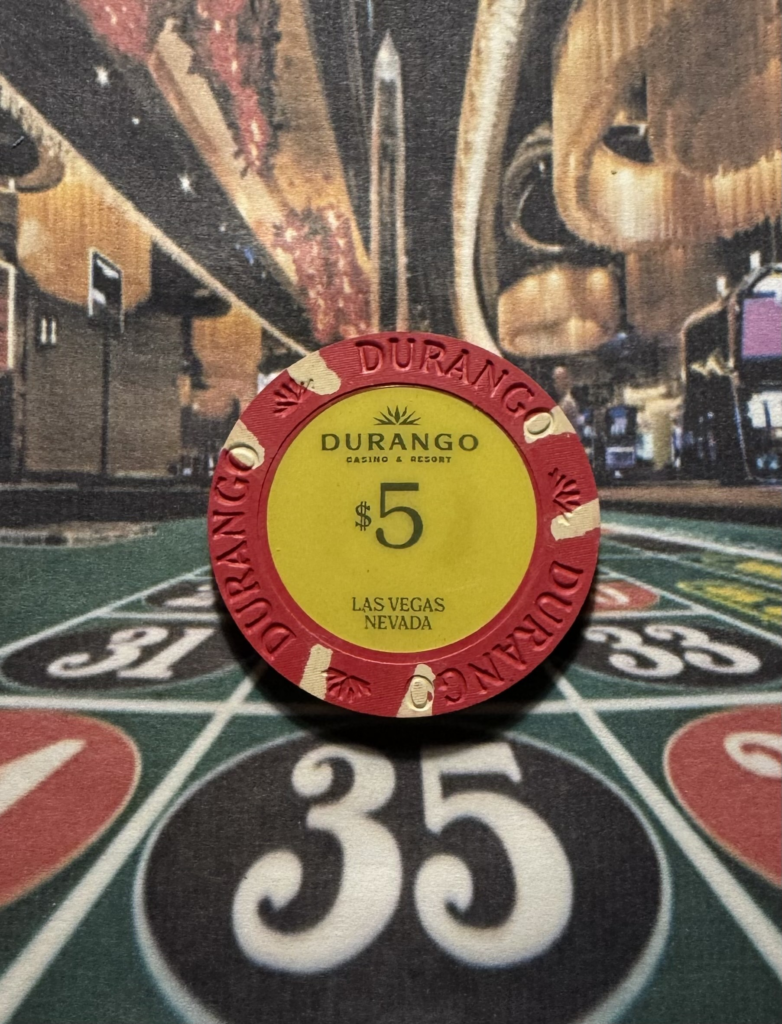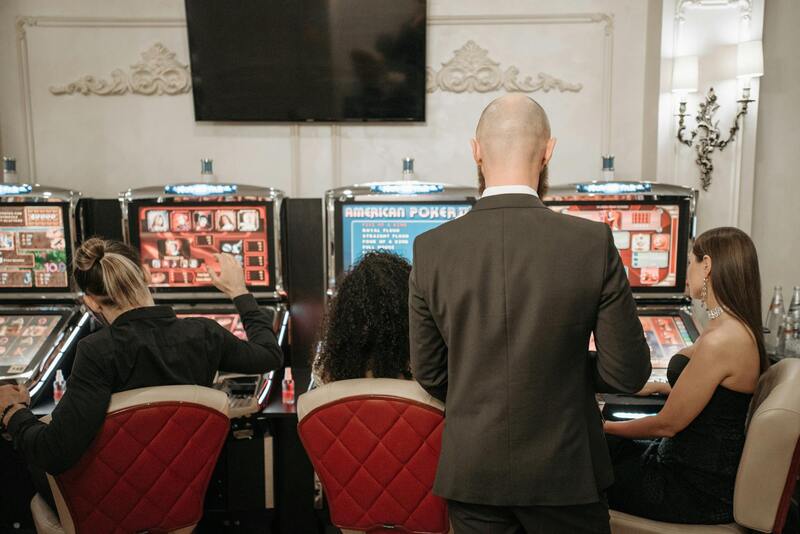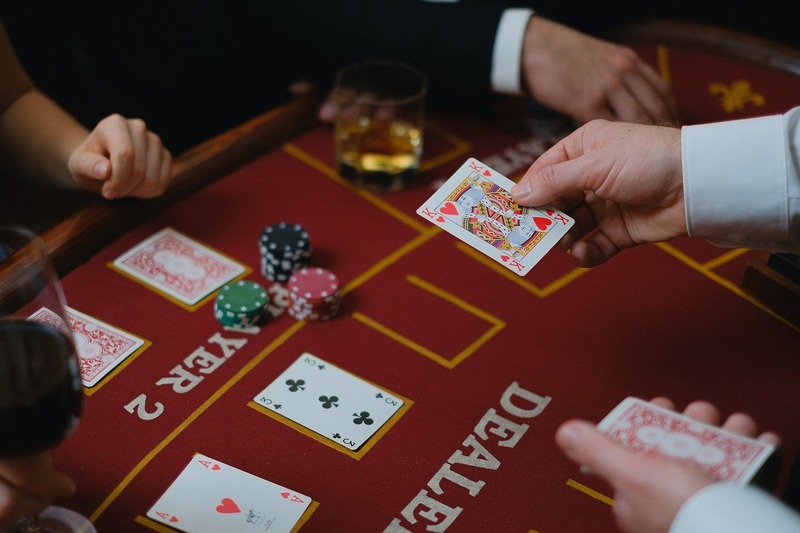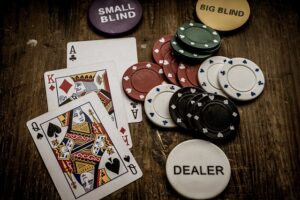
Man on the scene and casino chip collector Gregg Fisher (chip and token latest: 14,850) recently sent us this picture of a 5 dollar chip from the new Durango casino. the casino opeend on 5th December and Gregg was soon through the door! The resort includes an 83,178 sq ft, casino and over 200 rooms in a 15-story tower, with mutliple restaurants.
People can be quite savvy at the best of times, always looking to try and bag themselves a great deal. Players at online casinos are no different, with promotions pages often being the go-to area for many before they’ve even made a deposit or decided what game to play.
The reason for this is that the bonuses offered by casinos offer some great ways to change up gameplay. And today we’re going to highlight what a few of those bonuses are. But first, don’t be fooled into thinking that bonuses are just for new players, because they’re not. Existing players can also take advantage of some great offers as casinos look to secure that marketing dream of retaining existing customers by offering out various rewards.
So, let’s check out the type of offers you can find, and the benefits they bring to the table.
Free Spins
One of the most popular bonuses you will find around are free spins bonuses, and they’re quite common for both new and existing players. Sometimes you may get a lot, other times you may only get a few, but they’re great because they allow you to try out many popular slot games, quite often without even needing to make a deposit.
This allows you to get a feel for the games you can play, and many of these types of bonuses don’t come with wagering requirements so anything you win you get to keep (you can find that out by reading that all-important document – the terms and conditions – before you play). But they often do get played at the lowest possible stake, so do beware when they end because your stake could change when you start playing for real money.

Source: Pexels
Deposit Matches
Another type of bonus you can get whether old or new is a bonus where the casino matches your deposit. A casino welcome bonus UK players can get at Casimba is a 100% deposit match up to £200 on your first deposit, plus an additional 50 free spins which we’ve already discussed the benefits of. This kind of boost can double the money you have to play with meaning that you can potentially play for longer than if you just had your initial deposit.
With these bonus funds you can try your hand at many different games; some you may be familiar with and others you may not be. This allows you to get a feel for the types of games you enjoy, and most casinos make you use your bonus funds first, so it doesn’t cost you a penny to explore what the casino has to offer. Do check the T&Cs though, as these bonuses do sometimes come with wagering requirements, which can change depending on the game you play.
Cashback Bonuses
These types of bonuses work a little bit like insurance on your bets. The idea is that when you make a deposit and play with your funds, any losses will be returned to you. Usually this will come in the form of a 20% cashback bonus for existing customers, so if you lost £100, you would get £20 back. However, the percentages can often be higher for new customers, sometimes being a 100% bonus but up to a capped limit.

Source: Pexels
And there you have it, three of the most popular bonuses you will find at many of the best online casinos along with their benefits. Of course, what bonus may work well for one player may not work well for another. Therefore, it is always important to check the T&Cs of any bonus before activating them to make sure they are achievable, and there are no hidden catches.
 A Nanaimo, B.C., resident was shocked to find out she had won nearly $2.1 million from a video slot machine. Casino Nanaimo’s “Powerbucks” slot machine paid out a jackpot to Erralyn Joseph on Feb. 23.
A Nanaimo, B.C., resident was shocked to find out she had won nearly $2.1 million from a video slot machine. Casino Nanaimo’s “Powerbucks” slot machine paid out a jackpot to Erralyn Joseph on Feb. 23.
The woman was stunned when she had realised that she won a life-changing jackpot on a slot machine in Harbour City. The jackpots available on the Powerbucks slot machine usually start at $1 million and gradually begin to grow as more people wager on the machines across the province, according to the British Columbia Lottery Corporation. A $3 wager on a Powerbucks slot machine has a 1 in 25 million chance of winning the jackpot.
On her third spin of the machine, Joseph won $2,129,070.54. She was shocked and stunned, as well as her husband. She screamed when she realized how much they had won. She said that they didn’t seem to be on Earth at that point, they just seemed to be floating in the air.
Joseph recalled that It all happened so fast, and the machine was flashing saying $2.1 million had been won. Visiting Casino Nanaimo that night was a last-minute decision, Joseph said.
Their original plan wasn’t to go to the casino that evening; they had gone to a restaurant earlier that day and randomly decided to go to the casino after.
A second spur-of-the-moment decision was to play the winning slot machine instead of playing online once they arrived at the casino. Plinko was usually her game of choice, but when she saw a Powerbucks slot machine on the other side of the floor with a huge jackpot, she couldn’t resist choosing that slot as one of her final plays of the evening.
With the money she had won – A boat for her husband, a trip to the Bahamas or Mexico for her entire family, and support for the local lacrosse are all on Joseph’s wish list.
 It’s entertaining and rewarding to try your luck at online casinos. After all, it’s easy to find the best online casinos that offer good games at reasonable prices. Some of the best online casinos also have great customer service, which is good news for people who like to bet.
It’s entertaining and rewarding to try your luck at online casinos. After all, it’s easy to find the best online casinos that offer good games at reasonable prices. Some of the best online casinos also have great customer service, which is good news for people who like to bet.
How to Win in Table Games: Some Advice
Time spent at the table playing a game may be well spent with loved ones. Winning is the ultimate aim, whether you’re playing an old standby like poker or blackjack or one of the newer games like craps or baccarat. In fact, no plan or method can ensure success 100%. You may improve your odds of success, however, by remembering a few key points.
Always play the latest casino games within your financial means; never risk more than you can afford to lose. As an added precaution, study the regulations and get some experience under your belt before putting down any serious cash. Last but not least, control your emotions. If you can keep your cool under pressure, you could come out on top at the poker table.
Receive Freebies and bonuses when you sign up
No matter whether you’re playing at a real or online casino, be sure to take advantage of as many incentives as you can. Free spins, game-specific promos, no-deposit incentives, and many others may be found at a wide variety of online casinos, both for new and seasoned players. Physical casinos often provide visitors with freebies such as beverages, gaming credits, and meal coupons.
Take advantage of these incentives and special deals to save money on these games. Furthermore, you may play more games and enjoy your gambling experience more with their help. You may sharpen your abilities by engaging in more frequent play. The more practice you put into playing table games, the higher your odds of winning.
Advice for Live Casinos
Ask the dealer to colorize your chips at a live casino before you leave the table if you’re playing there. When you’re on a roll, this tactic may be really effective. To represent your earnings during the session, you may change the color of some of your chips to a higher denomination.
When the odds begin to stack against you, you won’t be tempted to keep playing by losing all your money. Try playing with a live dealer the next time you play at an online casino. You’ll be linked via video feed to a live dealer and table at an actual casino.
A digital overlay on the video connection screen will allow you to place bets using real cards, dice, or balls. This is a fantastic advancement for gamblers since it bridges the gap between online casinos and brick-and-mortar establishments. It’s still possible to feel like you’re in a real casino, even if you’re not physically present in one.
Conclusion
It is time to put the advice and methods you’ve learned to use in order to increase your odds of winning at the table games offered by online casinos. Pick a match, decide how much money you want to spend, and get started. With a little bit of good fortune and skills, you won’t have to wait long before you start winning prizes.


